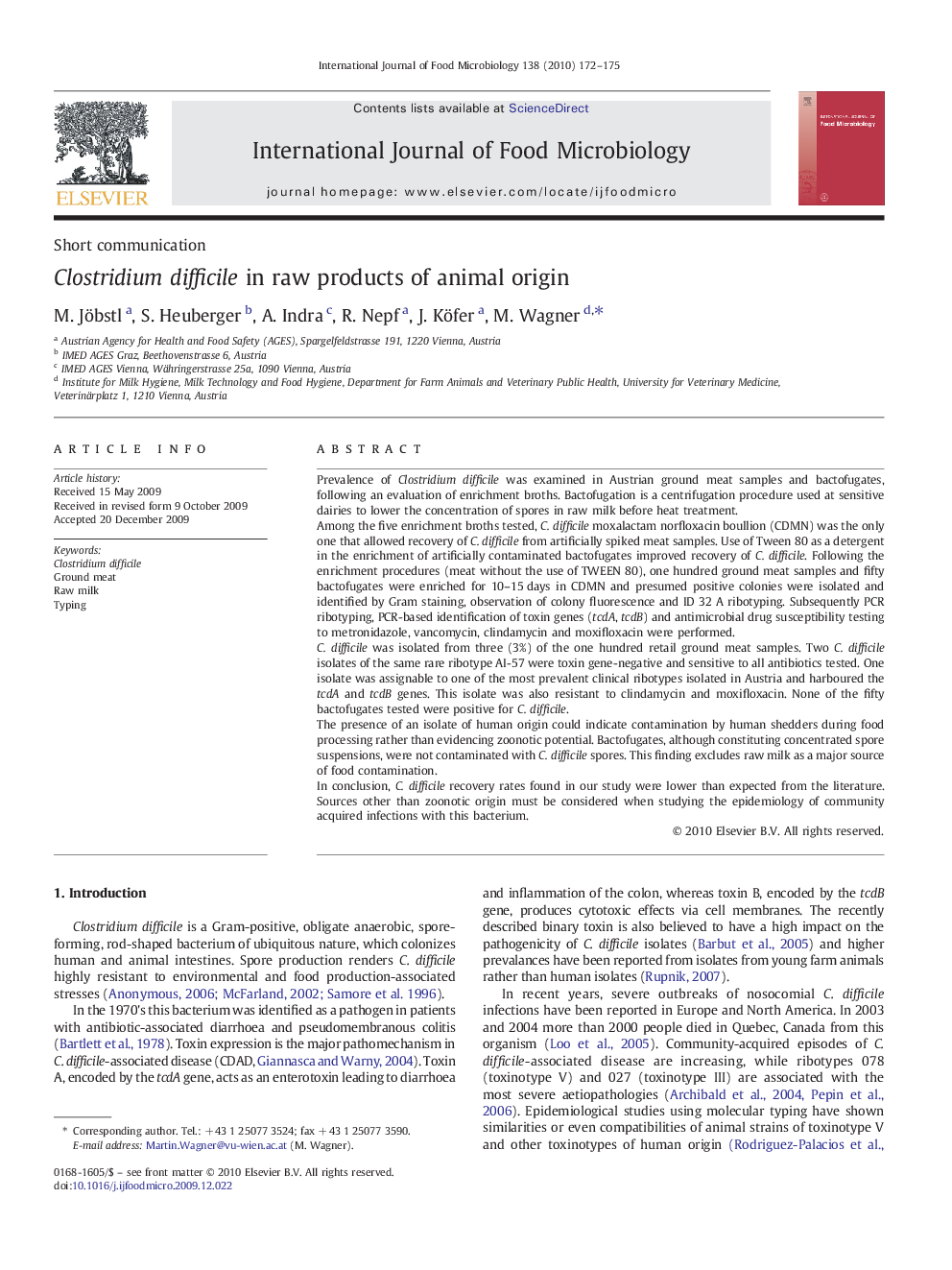| کد مقاله | کد نشریه | سال انتشار | مقاله انگلیسی | نسخه تمام متن |
|---|---|---|---|---|
| 4368385 | 1616692 | 2010 | 4 صفحه PDF | دانلود رایگان |

Prevalence of Clostridium difficile was examined in Austrian ground meat samples and bactofugates, following an evaluation of enrichment broths. Bactofugation is a centrifugation procedure used at sensitive dairies to lower the concentration of spores in raw milk before heat treatment.Among the five enrichment broths tested, C. difficile moxalactam norfloxacin boullion (CDMN) was the only one that allowed recovery of C. difficile from artificially spiked meat samples. Use of Tween 80 as a detergent in the enrichment of artificially contaminated bactofugates improved recovery of C. difficile. Following the enrichment procedures (meat without the use of TWEEN 80), one hundred ground meat samples and fifty bactofugates were enriched for 10–15 days in CDMN and presumed positive colonies were isolated and identified by Gram staining, observation of colony fluorescence and ID 32 A ribotyping. Subsequently PCR ribotyping, PCR-based identification of toxin genes (tcdA, tcdB) and antimicrobial drug susceptibility testing to metronidazole, vancomycin, clindamycin and moxifloxacin were performed.C. difficile was isolated from three (3%) of the one hundred retail ground meat samples. Two C. difficile isolates of the same rare ribotype AI-57 were toxin gene-negative and sensitive to all antibiotics tested. One isolate was assignable to one of the most prevalent clinical ribotypes isolated in Austria and harboured the tcdA and tcdB genes. This isolate was also resistant to clindamycin and moxifloxacin. None of the fifty bactofugates tested were positive for C. difficile.The presence of an isolate of human origin could indicate contamination by human shedders during food processing rather than evidencing zoonotic potential. Bactofugates, although constituting concentrated spore suspensions, were not contaminated with C. difficile spores. This finding excludes raw milk as a major source of food contamination.In conclusion, C. difficile recovery rates found in our study were lower than expected from the literature. Sources other than zoonotic origin must be considered when studying the epidemiology of community acquired infections with this bacterium.
Journal: International Journal of Food Microbiology - Volume 138, Issues 1–2, 31 March 2010, Pages 172–175